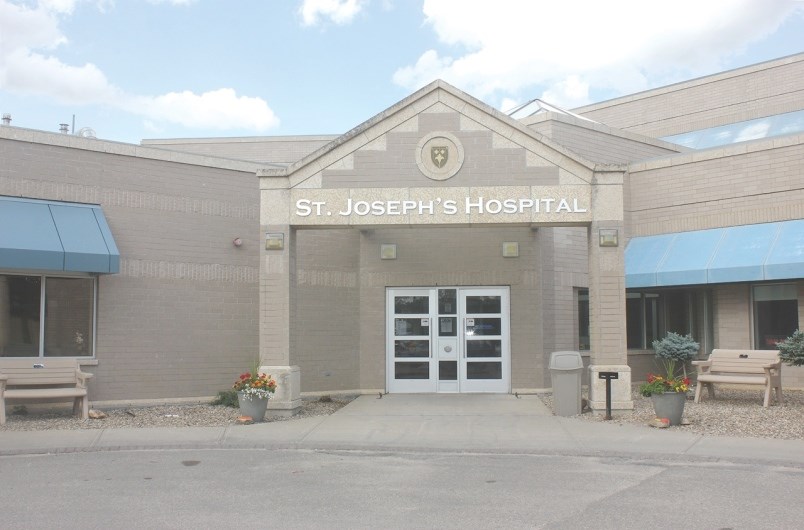ESTEVAN - Several physicians are leaving the community after a few years of service, but others are on their way.
Dr. Ryan Cormier, Dr. Germin Atia, Dr. Navjot Pannu and Dr. Daniel Garcia have all announced their departure in recent weeks. Garcia has already gone, while the other three will leave before the end of June.
A couple of new physicians are scheduled to start practising in Estevan in June, and another is slated to come in July. One more is to be here in September. The hospital is also in final discussions to bring in an obstetrician-gynecologist in June.
“The challenges of retention remain and the success of recruitment remains,” said St. Joseph’s Hospital executive director Greg Hoffort. “It’s certainly a challenge and it’s something that we work towards and want to do better, but thanks to the recruiting efforts of St. Joseph’s Hospital, the Saskatchewan Health Authority and the St. Joseph’s Hospital Foundation, it looks like we’ll be adding as many physicians as will be leaving and we’ll be looking to continue that recruiting.”
The hospital went through some service interruptions in August and September of last year due to staff shortages. Hoffort said he can’t guarantee there won’t be more, with staffing challenges due to COVID-19 and other factors.
“We’re recruiting nurses non-stop. The staff we have do an amazing job to meet the needs of the community … from over 250 of them. There’s not an overabundance of them and they do an amazing job with what they have.”
That includes support, care and physician staff.
Retention is a challenge, Hoffort concedes, and physicians leave for a variety of reasons. In some cases, it’s due to family. Others want to be in a larger centre. In the case of the four who are in the process of leaving, two were Saskatchewan International Physician Practice Assessment physicians with three-year return of service requirements and filled their terms.
“They’re going back to where they have family or where they have lived before, and are potentially seeking different opportunities as physicians,” said Hoffort.
Physicians in Estevan have to meet family office requirements, while family physicians manage the care in the emergency room on a rotation.
“It’s a tremendous service that they provide the community and it’s demanding. We continually meet with the physicians. We have monthly physician meetings with the entire group. We have quarterly one-on-one meetings with them and certainly are always exploring solutions.”
Hoffort believes the improvements in recreation in the community, such as the master pathway and sidewalk project, will help with recruitment and retention, but he concedes they have work to do on the retention side.
“We have been very successful on the recruitment side as a group effort and we’ve got some work to do (for retention), as do many communities in Saskatchewan and in the country.”
Dr. Kevin Wasko, the physician executive for integrated rural health with the Saskatchewan Health Authority, said Estevan is not alone when it comes to challenges associated with retention.
“It’s a perpetual challenge across many rural communities when a vacancy comes up, to be able to fill that vacancy,” said Wasko.
The SHA relies predominantly on SIPPA, and through that, internationally-trained physicians are recruited and matched with rural communities where there are vacancies.
“Wherever there are vacancies in the province, those communities will be identified, and then we go through a process where the vacancies are prioritized, and the amount of applicants that we have that are accepted into the program are then matched to those vacancies,” said Wasko.
He noted about 18 months ago, Weyburn was in need of physicians, but that situation has improved as new physicians have moved to that city.
Retention has always been an issue in rural Saskatchewan, he said. People who are born and raised in a community, or have connections to that community, are more likely to stay. Being able to practise the type of medicine one wants, and being supported by colleagues and health professionals, will also be factors for whether a physician stays.
“We do have a province that has relied heavily on international-trained physicians, and we’re grateful for them and the service they’ve provided, but that connection to a community will always be more challenging for someone who hasn’t come from that community originally,” said Wasko.
There is a lot of work that has to go into retention. It’s also important to encourage young local people to go into a career in medicine. He also believes it’s important for the provincial medical school to admit those who grew up in rural Saskatchewan and want to return to their rural communities.
Most physicians who come from elsewhere put in the time for the mandatory return in service, Wasko said, and when the time is up they have the opportunity to leave. If the physician hasn’t set down roots or don’t believe they belong, Wasko said it’s very likely they will leave when the time is up.
Those who leave Estevan and other rural communities are going to larger centres, Wasko said. Some physicians will remain in the province and choose to move to Regina and Saskatoon. But Toronto, Vancouver and Calgary are the most common destinations.
Wasko believes that retention needs to have an “all hands on deck” approach through a collaboration between local and SHA leadership, as well as community leaders.
“The more a physician feels welcomed, the more that they feel like it’s a place where they can set down roots and raise their family, the more likely they’re going to stay.”
Wasko has announced he is leaving the role with the SHA, effective the end of June. He cited fatigue after taking a leading role in the province’s fight against COVID-19.





